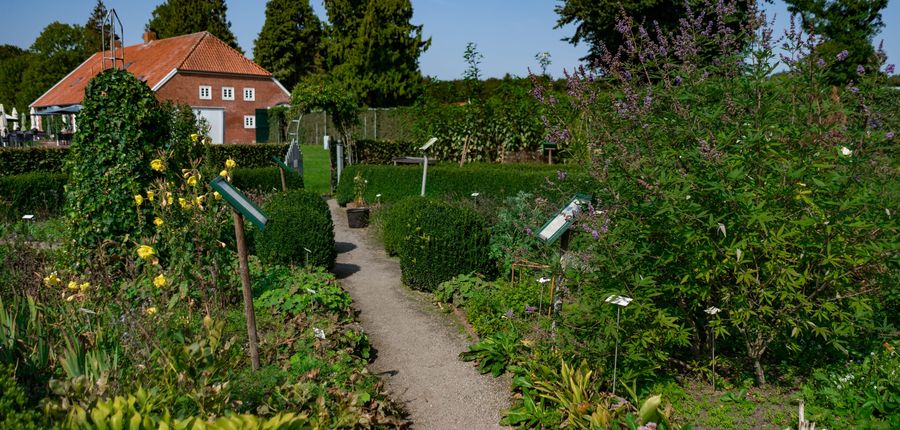Monastery Garden
Although there are no historical sources that prove the existence of a garden on the monastery site "Schola Deï" in Ihlow, it is very likely.

Although there are no historical sources that prove the existence of a garden on the monastery site "Schola Deï" in Ihlow, it is very likely.
Since the Cistercians were classically self-sufficient, the garden served as a food supplier. At the same time, it acted as a safe source of remedies needed in the monastery for medical care.
The current monastery garden at the monastery site Ihlow was created in 1987. However, it soon fell into oblivion again. In 2001 some members of the monastery association partnered with colleagues from the Hermann-Tempel comprehensive School and founded the group of "monastery garden women" to bring the monastery garden to its full bloom again.
Today, a team ensures that the garden continues to be maintained. The garden group meets in season at certain times. Interested helpers are always welcome! For further information, please contact Regine Romahn at: 04929/234470.
The four themed gardens
Based on the architectural nature of the cloisters of medieval abbeys, the monastery garden is cross-shaped. Its beds are enclosed by boxwoods and geometrically arranged.
Medical plant garden
Here you will find plants that were used as medicines in the Middle Ages. The abbess Hildegard von Bingen was one of the great healers of her time. She described 213 herbs, grasses and fruits with their nutritional values and healing powers. Many of these plants still play a role in modern medicine today.
The witches‘ garden
The witches' garden houses plants that are completely poisonous in parts or in whole (like foxglove or daphne) or have a mystical power attributed to them. Some have hallucinogenic effects that fooled their users into believing magical powers (henbane). However, most of them were used by women with medical knowledge, especially for women's ailments. Often it was midwives who were then easily denounced as witches and accused of sorcery. In the world dominated by men at the time, women's expertise was suspect and undesirable.
Unusual for a monastery garden the witches’ garden was designed to commemorate the ten women from Riepe who, along with their “master”, were accused of witchcraft and executed in February 1543 in Aurich.
Mariengarten
In the Mariengarten you can see plants that were associated with the Virgin Mary in the Middle Ages. Mary was the patron saint of the Cistercians. In the imagery of the performing arts of the Middle Ages, other plants symbolized the characteristics of the Mother of God Mary (e.g. violets stand for humility, the white lily symbolizes purity, etc.). Still other plants carry Mary in the name, such as the “Marienblümchen” (daisy).
Kitchen garden (Karlsgarten)
The selection of plants in the kitchen garden is based on a legislation written by Charlemagne (747 - 814) for his subjects ("Capitulare de Villis"), which was created in 812 AD. This regulation mentions 73 crops and 16 fruit trees and recommends them for planting. Other focal points in the kitchen garden are dyeing plants and historical crops from the 19th century, such as beans, lettuce, peas, potatoes, carrots. Plants from the Middle Ages like scurvy grass, good King Henry, ham root, oat root and goosefoot can be admired in this section of the garden.